¶ Arc Fitting
Most 3D models are made up of triangular facets, which means that all arcs in STL files are actually polylines approximated by multiple short straight line segments. You can right-click the model, select the 'Simplify Model' function and check 'Show Wireframe' to visually observe the triangular facet structure that makes up the model and the large number of small line segments used to simulate the curve (as shown in the figure below)
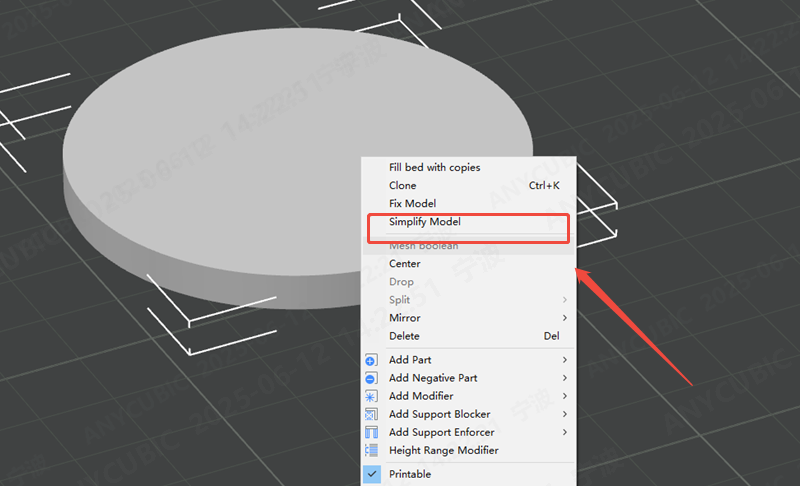
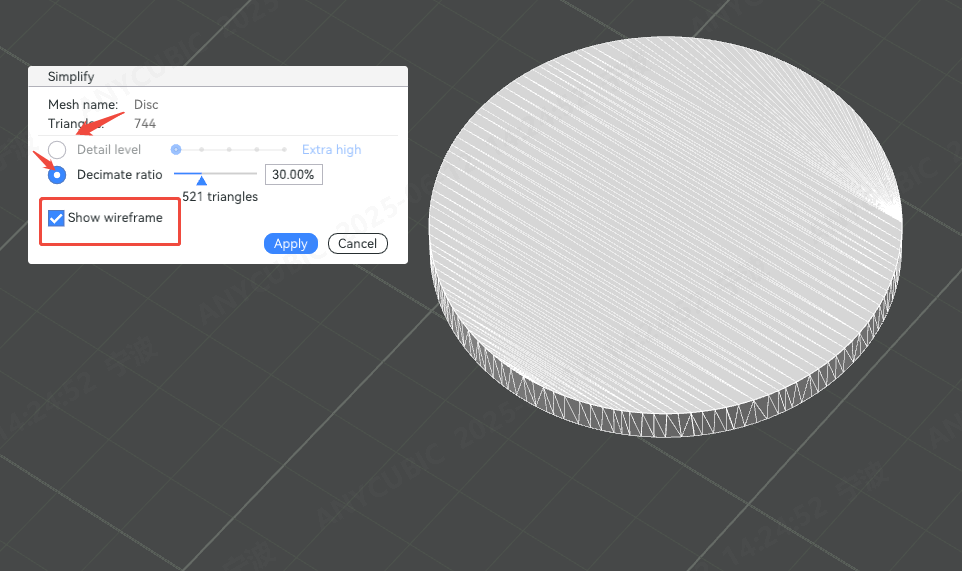
¶ How it works
Enable this to get a G-code file which has G2 and G3 moves. The fitting tolerance is same as the resolution.
Note: For Klipper machines, this option is recommended to be disabled, Klipper does not benefit from arc commands as these are split again into line segments by the firmware. This results in a reduction in surface quality as line segments are converted to arcs by the slicer and then back to line segments by the firmware.
During slicing and actual printing, the printer will strictly follow these path plans for movement and printing. When the printing speed is low, dense line segments have little effect on the printing quality. However, when printing at high speed, a large number of transient pulse signals will be generated at the inflection points of the line segments, resulting in obvious noise and vibration problems.
¶ Basic Introduction
You can enable or disable the arc fitting function in Process - Quality - Accuracy. This function is enabled by default to reduce vibration and noise during high-speed printing and improve print quality.
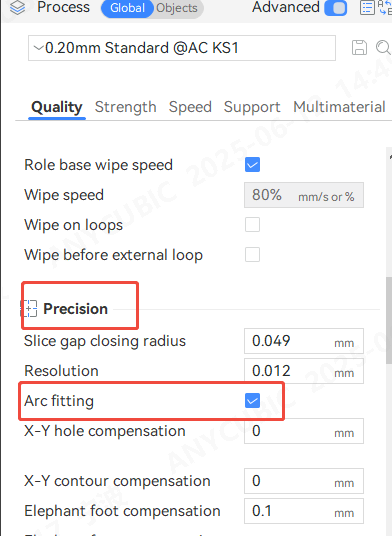
The resolution (precision) parameter defines the maximum allowable deviation (arc height error) between the arc fitting path and the original path. Increasing this parameter value appropriately can reduce the resolution, so that low-precision models can generate more arc segments during the slicing process. However, please note that too high a resolution setting may cause fitting anomalies, which are manifested as inter-layer misalignment during printing, and in extreme cases, may cause deformation of the model structure. Therefore, it is recommended to keep the default setting of this parameter and only make fine adjustments when necessary.
| Default resolution | |
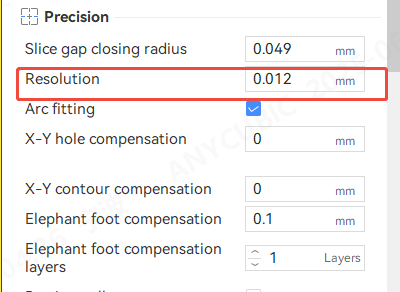 |
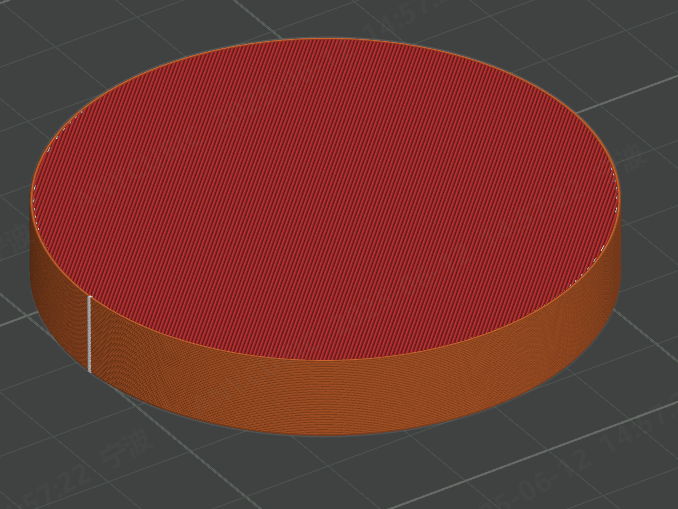 |
| Resolution 0.05mm | |
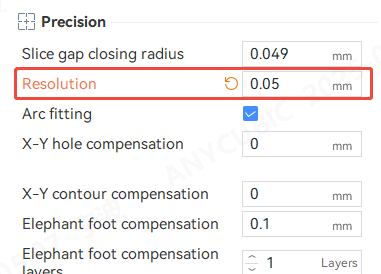 |
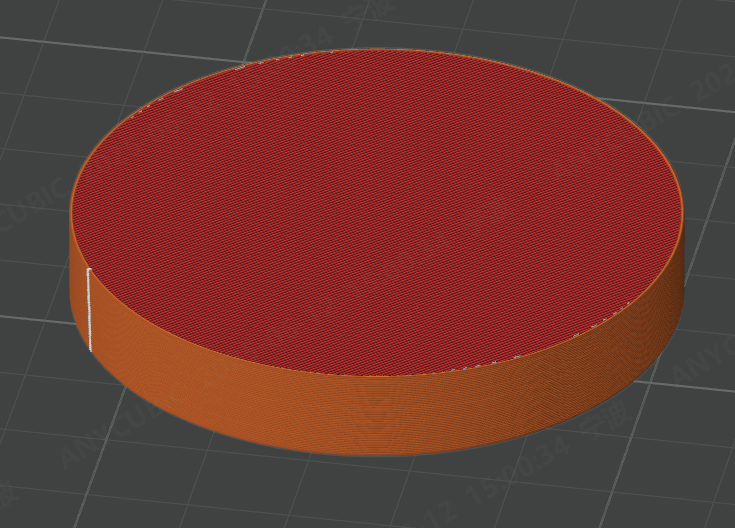 |
| Resolution 0.8mm | |
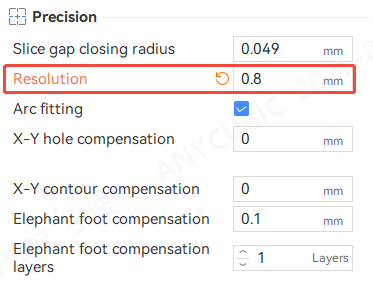 |
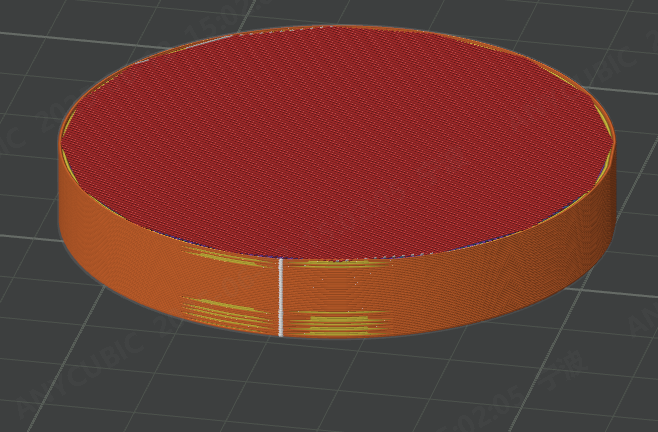 |
The above is a comparison of different resolutions. It can be seen that the larger the resolution setting, the different shapes of the arcs fitted in different layers will be different, resulting in misalignment and damage to the model surface.